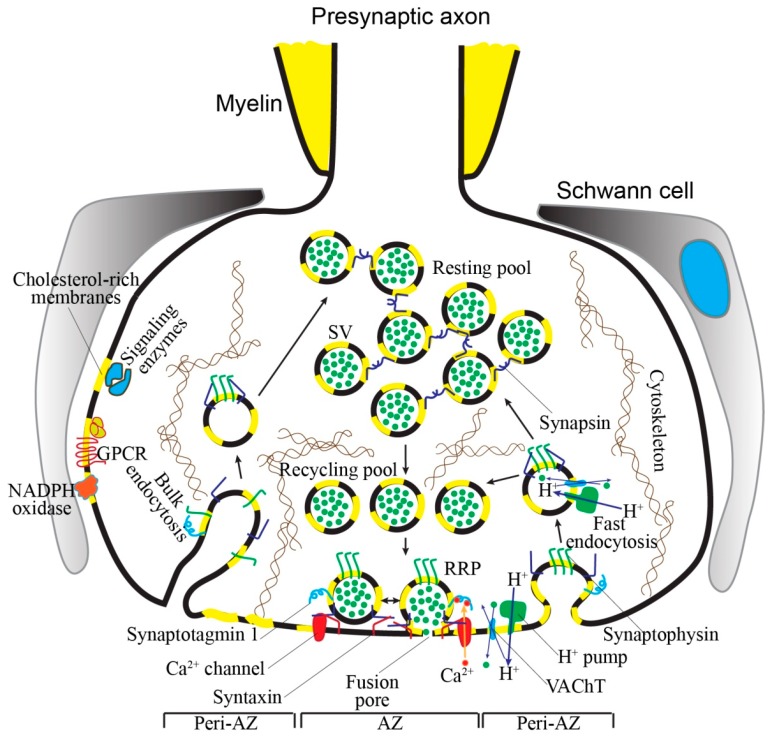Figure 1.
Putative role of cholesterol in presynaptic processes. Cholesterol organizes microdomains in presynaptic membrane and SVs. Several proteins, essential for presynaptic function, reside in these microdomains, and/or directly bind with cholesterol. These interactions are involved in control of multiple aspects of SV cycle that guarantees the maintenance of neurotransmitter release. Additionally, numerous presynaptic G-protein coupled receptors (GPCRs) and signaling enzymes (e.g., protein kinases and small GTPases), as well as a ROS-generating enzyme (NADPH oxidase), which regulates the steps of the SV cycle, could be located in cholesterol-rich microdomains. SV exocytosis occurs due to fusion of SVs from ready-releasable pool (RRP) with presynaptic membrane in AZ region. Under condition of moderate motor nerve activity, replenishment of RRP is mediated by delivery of SVs from recycling pool. After exocytosis, these SVs are able to rapidly recover through fast endocytotic mechanism, refill with ACh (green circles), and repeatedly participate in neurotransmitter release. Intense activation of motor neuron can led to mobilization of SVs from resting (reserve) pool to the exocytotic sites. After massive exocytosis, the resting pool is replenished by mainly slow endocytotic route (bulk endocytosis) associated with formation of endosome-like structures in NMJs. The cytoskeleton can contribute to spatial organization of both SV pools and routes for SV traffic. Key events, where the presence of cholesterol is required, are SV exocytosis (fusion pore formation, Ca2+ triggering step), endocytosis (vesicular protein holding in cluster), SV refilling with ACh (formation of proton gradient, exchange ACh and proton), SV clusterization (SV interconnections by synapsins), limitation of ACh leakage via spontaneous (clamping of signaling enzymes activity and ROS production), and nonquantal (decrease in activity of vesicular ACh transporter and H+-pump in presynaptic membrane) secretion. Please, for details, see Section 3 and Section 5.

